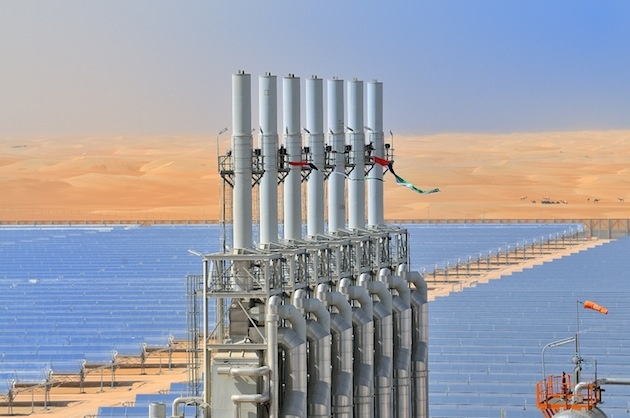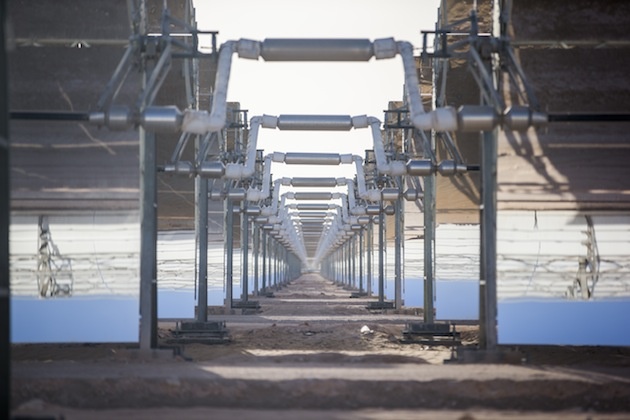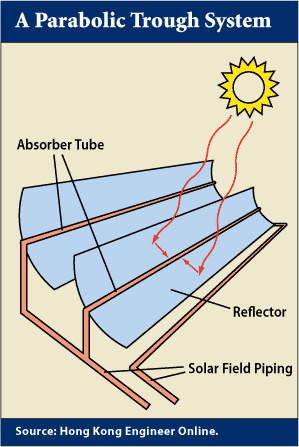Image: Ryan Carter/Crown Prince Court - Abu Dhabi
One of the world's oiliest countries is now operating one of the most advanced clean energy power plants. The Shams 1, a 100-megawatt concentrated solar power plant, has just started soaking up the Arabian sun outside of Abu Dhabi. That's the biggest of its kind on the planet.It's a joint venture between the French energy giant Total, the Spanish renewable energy wizards Abnegoa, and Masdar, Abu Dhabi's clean energy company. It will juice some twenty thousand houses, and cut out of the atmosphere 75,000 tons of CO2 per year.Image: (Masdar/ Shams Power Company)
Concentrated solar power isn't like other solar power. These major, utility-scale projects typically use mirrors—either U-shaped parabolic troughs or flatter heliostats—to concentrate the sun's rays on a fluid instead of absorbing them. The Shams 1 uses some 258,000 mirrors in troughs, which track the sun from East to West during the day so that the sun is continuously being focused onto oil-filled pipes, which produce steam. Which turns a turbine. Which makes power.Image: Simon Charlton / Masdar
Concentrated solar is cool because in certain iterations, the plants allow you to store energy—for instance, in molten salt, like what's used in certain thorium reactors—for later use. For conventional solar, sunset's the off switch. With concentrated solar, it doesn't have to be. The Abu Dhabi system will now generate about 10% of the world's concentrated solar power.Much has been made by those who pay attention to these kind of things about how Abu Dhabi—oil-soaked and oil-rich Abu Dhabi!—is investing so heavily into these kinds of things, while so much of the world dithers.And good. Let's make much of this. These are the technologies that will keep societies humming if and when we finally decide to stop pumping the atmosphere full of planet-frying carbon dioxide. Things like these will replace the coal plants of the 20th century. Things like these will give us a shred of a shot at keeping the lights on without overheating.




